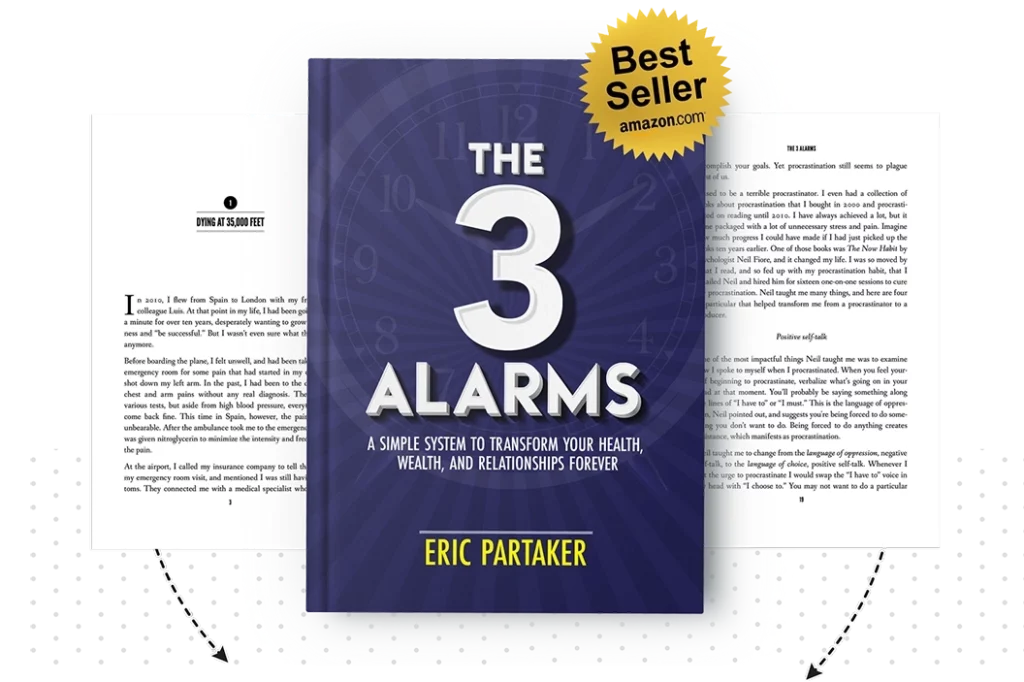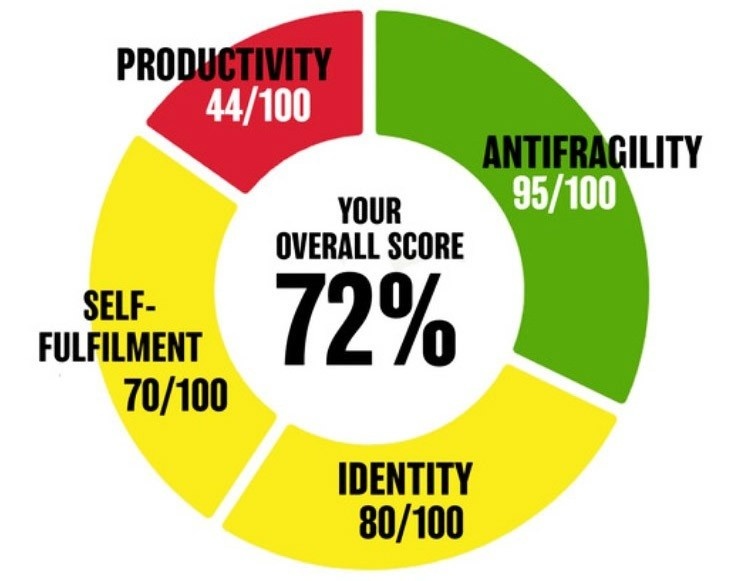SUMMARY
- There are only seven types of meetings, and mastering them can transform the results that you achieve for both you, your team, and your company.
- The first is the daily huddle, a very quick meeting first thing in the morning that lets you know your team’s top priorities for the day. This meeting is a chance to both increase the team’s transparency and for the team to chip in and help wherever they see fit.
- The second meeting type is a weekly team meeting. Every team needs to be coming together on a weekly basis to look at what they’re doing, how they’re doing, how they’re performing against the team’s goals. Ninety minutes in length, maximum. In this meeting we measure performances in sales, transactions, quality, compliance, and other key metrics.
- The third meeting is the Friday wins meeting. It is simply an opportunity for the team to celebrate at the end of the week. It’s a great chance for people to share some positive energy. There’s no cracking of the whip. What went well this week? How did we fare against the commitments that we set out at the start of the week?
- Number four are monthly reviews. During this meeting, we also look at key company metrics. Often there are a lot of metrics that we can only calculate on a monthly basis, like financial metrics. This is a chance to review those metrics, and to take a deeper dive in terms of how we’re doing against the goals that the company has set for itself.
- The fifth meeting type is the ad hoc strategic meetings or urgent meetings. There will be things that will come up unexpectedly, like emergencies, or issues you want to tackle that fall outside the set of goals currently for the quarter. These are subjects that need an entirely separate session away from regular meetings.
- The sixth meeting type is the regular quarterly off-site meeting, done usually two weeks before the quarter ends. You’re getting everyone together to evaluate their progress against their individual team goals, as well as how the company is doing against its quarterly goals. What went well? What didn’t go so well? Any insights, key learnings?
- The last type is annual review and planning meeting. This is a much bigger meeting, a two or three-day long affair at the start of the year. Here is where you’re really going to go through everything. Everything for the team, for the company, for the entity, for the organization. Here is where the annual strategic plan is established.
TRANSCRIPT
You may think that meetings are boring or a waste of time, or perhaps they don’t produce the results that you want for you and your team. But the thing is, there’s only seven types of meetings. And if you can really master these, master doing them, master the output that you get from them, it can transform the results that you achieve for both you, your team, your company, wherever you’re managing a group of people. So today, I’m going to go through those seven types of meetings, how you can install them and what you should expect for each of them. Hi, my name is Eric Partaker, and I help entrepreneurs, leaders, and individuals scale up themselves, their teams and their companies, and all without sacrificing their health and relationships all in this quest to reach our full potential to become all that we can be. So let’s dive into it.
Seven types of meetings that you can install for great effect to increase the output of you and your teams. The first is the daily huddle. This is simply as it sounds, a huddle that you do on a daily basis. I like to time this right at the start of the day, key members of the team jumping on either in-person, jumping into a meeting room or on the phone or on Zoom and just getting together very, very quickly and sharing what are their top three priorities for the day? What are the three things that each person is going to be working on?
And a key thing to make these meetings super successful is for each of the people, when they’re going through what their top three things are, to also flag or describe or just call out any obstacles or issues that might get in the way, because this is a chance for the other members of the team to jump in and say, “Well, hey, I might be able to help you with that.” Or it’s a chance for them to flag that they might need support in a particular area. And it’s really just an opportunity for the team to both increase its transparency amongst each other, and at the same time, for the team to chip in and help wherever they see fit. This meeting is 15 minutes tops and I’m taking about a team size of about five people here. And again, first thing in the morning, a daily huddle, super simple, great results.
The second meeting type is a weekly team meeting. Every team needs to be coming together on a weekly basis to look at what they’re doing, how they’re doing, how they’re performing against the team’s goals. The only way to measure a team’s success is its ability to achieve the results that it sets for itself, right? Is the team winning or losing? And that happens in that weekly team meeting as well as problem solving. So a quick agenda that I like to do for a weekly team meeting, I give it about 90 minutes in length maximum. Sometimes you can do a 60 minute meeting as well. And I like to start with going around very, very quickly by each member of the team and just simply asking what’s one thing that made you smile from the previous week? Just to get the meeting started off in a more human kind of lighthearted way.
Following that, if you’re running a company, then we like to look at well, how is the company performing against its key metrics? And we do a quick are we green, yellow, or red against all of those key metrics? Sales, transactions, quality, compliance, whatever your key metrics are for your company or for your team. Right after that, I like to go into each individual team member, then traffic lighting their performance against their goals for the quarter. So again, are they green, yellow, or red against each of their goals? And I’m keeping a key ear out for all the yellows and the reds, because those are going to drop down to the agenda for discussion later. And I resist the temptation in that moment as we’re going around, to dive into and try to problem solve those reds or greens right there, sorry, those reds and yellows right there in that moment. Just record. You’re just collecting the data at this point.
Once we get down to the actual discussion part of the meeting, that’s where we’re going to go through any goals that were cited as being yellow or red. Also any company metrics that were off will be discussed as well. And here it’s an opportunity for all the team members take off their functional hats and to really just get into contributing to how might we get that goal back on track? How might we help this individual? What could we be doing for the company? What’s another way to be thinking about a particular problem or issue? So it’s really a great opportunity for the team to come together.
Now, the next meeting that I like to do on a weekly basis, I call it a Friday wins meeting. So I schedule that for the end of the week, and this is an opportunity simply for the team to celebrate. So how did each of the individuals fare against the commitments that they made at the start of the week in that weekly team meeting? Now, as mentioned, we have our daily huddles going on as well, so if you were to think about this as an entire structure in a week, for example, you could be doing your team meeting, weekly team meeting on a Monday, okay? And you could perhaps skip the daily huddle on that day. Tuesday, Wednesday, and Thursday, you could have your daily huddle, perhaps Friday as well, but at the end of the day, towards the afternoon on Friday, that’s when I like to do the Friday wins meeting.
And once again, it’s a great chance for people to share some positive energy. There’s no cracking of the whip in the meeting. This is about celebration. What went well so far this week? How did we fare against the commitments that we had set out at the beginning of the week?
Number four, the next meeting type that I like to install are monthly reviews. So these are set at the same time every month. And during this meeting, we’re looking at, once again, key company metrics. Often there are a lot of financial metrics that we may not be able to calculate on a daily or a weekly basis, but we are able to calculate say on a monthly basis. And so this is a chance to review those metrics, also to take a deeper dive in terms of how are we doing against the goals that the company has set for itself? How are we fairing? Are we on track to hit our quarterly targets? So that’s a meeting that I like to do once a month, a full company review together with any pressing strategic issues that need to be discussed.
The fifth meeting type that I like to install is I think of these as like ad hoc strategic meetings or urgent meetings. There will be things that come up. Juicy maybe issues or problems that you want to tackle maybe that fall outside of the set of goals currently for the quarter, or emergency things. These things may come up in the team meeting, they might come up in the monthly review, and you might realize that, wow, actually this needs an entirely separate session to do that meeting or that topic justice. And so, these are scheduled ad hoc as needed. And generally, it could be anywhere from an hour to four hours, depending on whatever the discussion topic is.
And a key thing to get these meetings right is to really clearly define, well, what’s the outcome that we want to achieve with that strategic meeting? What would make that meeting a great result? Why are we doing this meeting? What, what is it that we’re seeking to solve? And then to assign key pieces of pre-work to the participants of that meeting so that they’re coming to the meeting with all the information that’s required to make the meeting productive, and so that you could reach a good decision about whatever it is that you’re trying to solve or work on.
The sixth meeting type that I like to install is a regular quarterly off-site. And you need to have a good rhythm to this. I suggest that two weeks before the quarter ends, you’re getting everyone together to evaluate their progress against their individual team goals, as well as how is the company doing against its quarterly goals, and they’re using that and you’re asking yourself a series of questions. Well, what went well? What didn’t go so well? Any insights, key learnings? And then how might that inform the next set of quarterly goals that you’re going to set for the company and for the teams? And then once those goals are set, leaving time to cascade whatever those company goals are down to the individual teams, so that they can then do their mini team off-sites and come back with, well, what are their team goals that are going to be in service of some or all of the company’s goals?
So that’s a structure that I like to install on a quarterly basis, your quarterly off-site structure, which includes, once again, overall for the company, and then cascading down into the individual teams so that they can come back to the leadership and say, “Well, this is what we’re going to be doing to support the company’s overall efforts.”
And the number seven, I like to do an annual review and planning meeting. This is a much bigger meeting. Could be two, three days long at the start of the year, and you’re really going to go through everything. Everything for the team, for the company, for the entity, for the organization. How are we doing strategically? What are the things that we need to be working on? What’s going well once again? What isn’t? Any insights and key learnings from all the quarterly performance last year? What’s happening externally, internally, and how do we fuse that together into a new annual strategic plan?
So, seven meetings which you can install to generate better results for your team, for your company, for your entity, including that daily huddle, your weekly team meeting, your Friday wins, your monthly reviews, your ad hoc strategic meetings, your quarterly off-sites, and your annual planning and review meetings.




